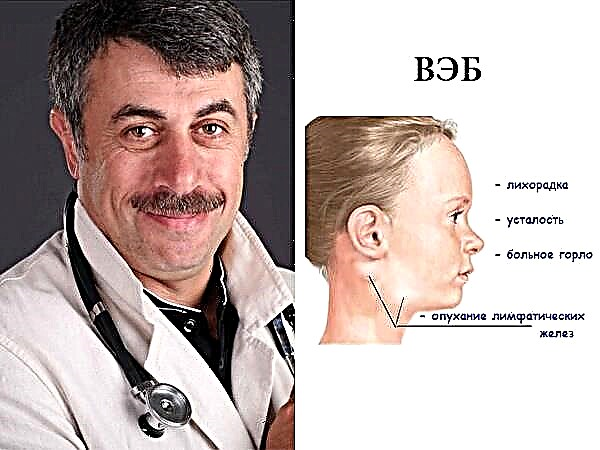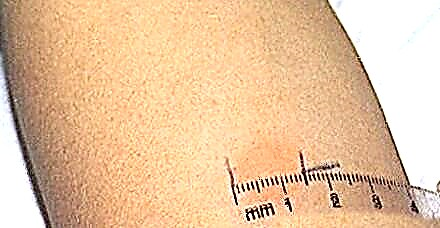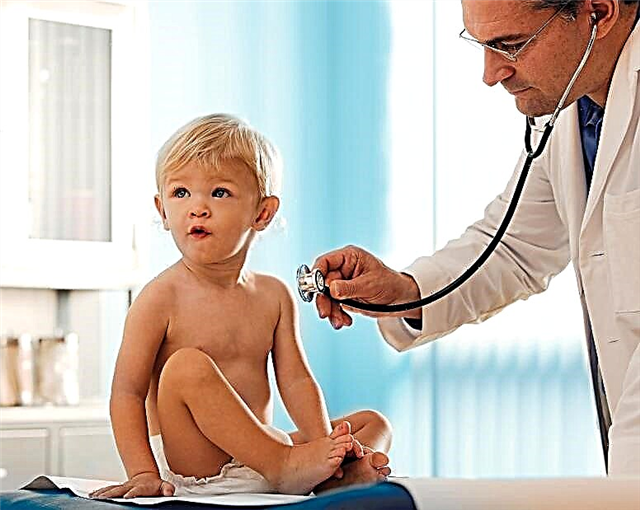Baby's skin is a very complex and multifunctional organ, interconnected with almost all body systems. Skin is a natural barrier that protects a person from the harmful influences of the external environment. In addition, it is a kind of bioscreen showing any damage to the internal environment of the body. Allergic rashes in children are something that almost any parent gets acquainted with in the first year of their baby's life. This article will outline the basic information about allergic ailments in children, accompanied by the occurrence of skin rashes. It will also highlight the methods of treatment and diagnosis of allergic skin rashes.
Over the past decades, the number of people with allergic skin diseases has doubled. The emergence of new, atypical forms of the disease that lead to disability is very alarming. The methods of treating skin manifestations of atopic diseases in children are constantly being improved. But, despite all the efforts of rapidly developing medicine, coping with this childhood ailment is quite difficult.
Why do medications often fail? One of the reasons is the lack of basic knowledge about the features of the disease in the relatives of the sick person. Indeed, sometimes it is very difficult to understand the abundance of information from the Internet and other sources, moreover, it can be unreliable.
At the beginning of this rather difficult topic, it is necessary to understand the basic scientific and medical concepts.
What are allergic rashes in children?
Allergic rashes are allergic diseases characterized by the appearance of severe itchy rashes on the child's skin, persistent or recurrent.
 Previously, such concepts as "eczema", "diathesis", "neurodermatitis" were often used.
Previously, such concepts as "eczema", "diathesis", "neurodermatitis" were often used.
Currently, it is customary to refer to allergic skin diseases as atopic dermatitis, rashes with drug allergies, urticaria, allergic contact dermatitis, and toxidermia.
The group of toxidermias includes bullous dermatoses, exudative erythema multiforme, Stevens-Johnson syndrome, Lyell's syndrome.
In fact, there are a huge number of clinical forms of dermatoses.
In this article we will talk about the diseases most common in babies.
Why does a child develop an atopic rash?
In babies under one year old, allergic skin rashes appear for a variety of reasons.
First of all, it is a genetic, that is, hereditary predisposition. When talking with parents, the doctor often finds out the presence in the family of relatives suffering from atopic bronchial asthma, eczema, allergic rhinitis, drug allergies.
If atopic manifestations of the disease are detected in both parents, the probability of an allergic rash in a child increases to 80%.
In addition to hereditary predisposition, the influence of environmental factors in which the child grows up plays an important role.
Risk factors for allergy symptoms in children:
- unfavorable course of pregnancy. We all know the fact that smoking, alcohol, occupational hazards in the workplace, which the expectant mother encounters while carrying a child, negatively affect the health of the baby. The background for the development of atopy in children is often the toxicosis of pregnant women, latent bacterial and viral intrauterine infections;
- inappropriate nutrition of a pregnant and lactating mother. Expectant mothers often have manifestations of many forms of allergic diseases. An excessively increased appetite during childbearing prompts a woman to eat high-calorie and, often, allergenic foods - chocolate, coffee, smoked meats, spices, cakes. As a result, the fetus is heavily attacked by allergens. During the entire period of lactation, disturbances in the diet often provoke the appearance of disorders of the unprepared digestive system in the infant, which leads to a decrease in the absorption of food and the development of allergies in the infant;
- unreasonable transfer to feeding with milk formulas. For various reasons, the baby is transferred to formula milk. This can be both the reluctance of the mother to breastfeed, and the state of health of the baby.
All formulas are just an adapted likeness of mother's milk. Most often, an unreasonably early transition to artificial feeding forms food hypersensitivity to cow's milk proteins;
- early unreasonable introduction of complementary foods.Often, a bright allergic rash on a child's face can be observed with the early introduction of milk porridge, cottage cheese, yolk, fruit and vegetable juices into the baby's food;
- infections.Frequent acute respiratory viral infections, otitis media, adenoiditis, tonsillitis, and caries contribute to the development of skin allergies in children. The likelihood of atopy in a child increases with the identification of chronic inflammatory diseases in family members;
- parasitic invasions.Parasitic diseases provoke an allergic mood - echinococcosis, giardiasis, ascariasis, toxacariasis. In the clinical picture of these diseases, various manifestations of urticarial rash are often present;
- diseases of the stomach and intestines.With gastritis, duodenitis, pathology of the biliary tract in a child, the absorption of nutrients is disturbed, the ability of foreign agents to penetrate the intestinal mucosa increases. As a result, this leads to the development of various forms of hypersensitivity;
- cigarette smoke. Passive smoking plays an important role in the development of allergic dermatoses and bronchial asthma.
The role of allergens in the development of allergic dermatoses in children
In children under one year old, food allergens come to the fore - proteins of cow's milk, cereals, eggs.
 In children after two years of age the appearance of a rash can provoke:
In children after two years of age the appearance of a rash can provoke:
- epidermal and household allergens (house dust mites);
- animal allergens (epithelium, wool, secretions);
- pollen from wind-pollinated plants;
- fungi;
- staphylococcus allergens.
Examination of a small patient with symptoms of an allergic rash
What can an allergist offer you if you suspect atopic rash in a child? First of all, this is skin testing for allergens. But with a pronounced skin process and an exacerbation of the disease, it will be advisable to perform a blood test for antibodies to causally significant allergens - specific immunoglobulins E.
The term "immunoglobulin" itself refers to a serum protein. As a rule, immunoglobulins E are normally present in small amounts in the blood to protect against parasites, bacteria, viruses. When particles actively acting on immunity enter the body of an allergic person, the content of immunoglobulin E rises.
What does an allergic rash look like in a child?
The Internet contains a huge number of photos of various rashes in children with allergies. If you know the main types of morphological elements for various atopic rashes, you can easily suspect an allergic process.
Rash with atopic dermatitis
In atopic dermatitis before 2 years of age, the rash takes on the character of bubbles with liquid and is often accompanied by weeping. Subsequently, a crust forms. The rash spreads to the entire surface of the body.

In some cases, the baby's skin becomes rough with the formation of cracks.
After 2 years of age, the rash goes to the folds, behind the ears, on the flexion surfaces of the arms. The child is worried about the strongest itching. The skin in the area of the rash becomes bumpy, uneven. From the age of 10, the elements of the rash take on the character of nodules. The area around the mouth and eyes is involved. The skin is dry, with combs.
Features of rashes with urticaria
With urticaria, the rash looks like blisters surrounded by an area of redness. Most often they are accompanied by severe itching and burning.
Allergic dermatitis
The eruptions are bright, itchy. Most of them are located at the site of exposure to the allergen. The presence of bubbles can be observed more often.
Toxidermia
The nature of the rash is characterized by a variety of elements - blisters, papules, vesicles, spots, redness of the skin. But the manifestations are often fixed.
The main methods of treating allergic rash in children
Before treating skin manifestations of allergies, it is simply necessary to eliminate the interaction of the child with the possible allergens surrounding him.
So first we eliminate household respiratory allergens:
- In case of sensitization (allergy) to various household allergens in the baby's bedroom, it is forbidden to stir upholstered furniture, carpets, heavy curtains.
- The floors are better to be wooden or covered with laminate. Furniture should be easy to clean, curtains are better in the form of blinds.
- Items stored in closets must be packed in plastic boxes, vacuum bags.
- Wet cleaning is done daily. It is better to use washing vacuum cleaners.
- Pillows should only be made of synthetic anti-allergic materials. Pillows and bed linen should be washed every week at temperatures over 60 ºC.
- Mattresses should be packed in zippered covers.
- It is better to replace soft toys with plastic or wooden ones.
- The presence of animals in the house is unacceptable.
- Indoor plants are best removed because they are dust collectors and fungi can live on them.
- The shelves must be glazed.
- It is forbidden to use air fresheners, chlorine-containing household chemicals, deodorants.
- Better to install an air conditioner and an air purifier. This will reduce the amount of allergen in the air.
- Optimum air humidity is recommended within 35 - 50%.
Eliminate pet allergens
Any animals can cause allergies. Therefore, it is better to refuse them. After parting with pets, it is necessary to carry out a general cleaning.
Even after the animal is removed from the apartment, allergens persist for up to six months.
What to do if your child has a food allergy?
Parents should consider the so-called obligate food allergens, that is, the foods most often provoking the appearance of a rash in an allergic person. These are dairy and sour milk products, wheat, coffee, spices, smoked meats.
What medicines are used to treat allergic rashes in children. Features of therapy
Antihistamines
They help to eliminate itching, swelling, redness at the site of the rash.

Modern effective remedies include drugs such as desloratadine (Erius), ceterizine (Zyrtec), loratadine (Claritin). The drugs have an effect for 24 hours and are prescribed once a day.
Membrane stabilizing agents
Prevents the development of an immune response. The effect is noticeable after 10 days from the start of treatment. The drugs are excellent at relieving inflammation. These medicines include montelukast (Singular).
External therapy
Corticosteroid ointments. Modern ones well eliminate weeping, burning, discomfort and redness in the affected area.

In children's practice, Lokoid, Elokom, Advantan are often used. Ointments are prescribed in a small course for 5 to 7 days.
Pay attention to the form of prescribing the drug. With an acutely expressed process, emulsions, lotions, aerosols are used. With sluggish - lip cream, ointment, oily ointment.
External therapy options:
- Step therapy. Glucocorticosteroid drugs are applied to different areas of the lesion.
- Tandem therapy. Combined use of hormonal creams and skin care products.
- Top-down therapy. We start with strong drugs (Elokom), end with weak ones (hydrocortisone ointment).
Key questions for parents:
- Is there an alternative to hormonal ointments? The answer to this question is yes. Calcineurin inhibitors have been used for two decades. The representative of this class of drugs - Protopic, is used in babies from 2 years old. The drug is famous for the fact that it does not have systemic side effects and can be used in remission 2 times a week for a long time.
- How to take care of your skin? The skin needs to be moisturized using medicated cosmetics.
Hygiene and skin care products with emollient properties are called emollients.
Here are the main rules for their application:
- emollients must be applied to the skin after water treatments. Can be applied up to 4 times a day;
- the amount of emollient applied to the baby's skin should not exceed the amount of hormonal ointment by more than 10 times.
Pay close attention to the composition of your product. It is very good if the composition contains essential lipids. But the presence of perfume compositions is undesirable;
- emollients are applied to the skin half an hour after applying the ointment with hormones.
The series of cosmetics "Atoderm", "Realba", "Physiogel", "Lipikar" have proved to be excellent.
Thus, allergic rashes in children are often considered as the main predictor of the formation of atopic diseases of the respiratory system.
All chronic dermato-allergies significantly reduce the quality of life of the whole family. As far as the influence on the patient's condition is concerned, atopic dermatitis is comparable to diabetes mellitus. That is why parents of sick babies must clearly follow the recommendations of the treating allergist on a hypoallergenic diet and everyday life, and follow the rules of skin care. All these measures will help prevent the development of formidable complications.



